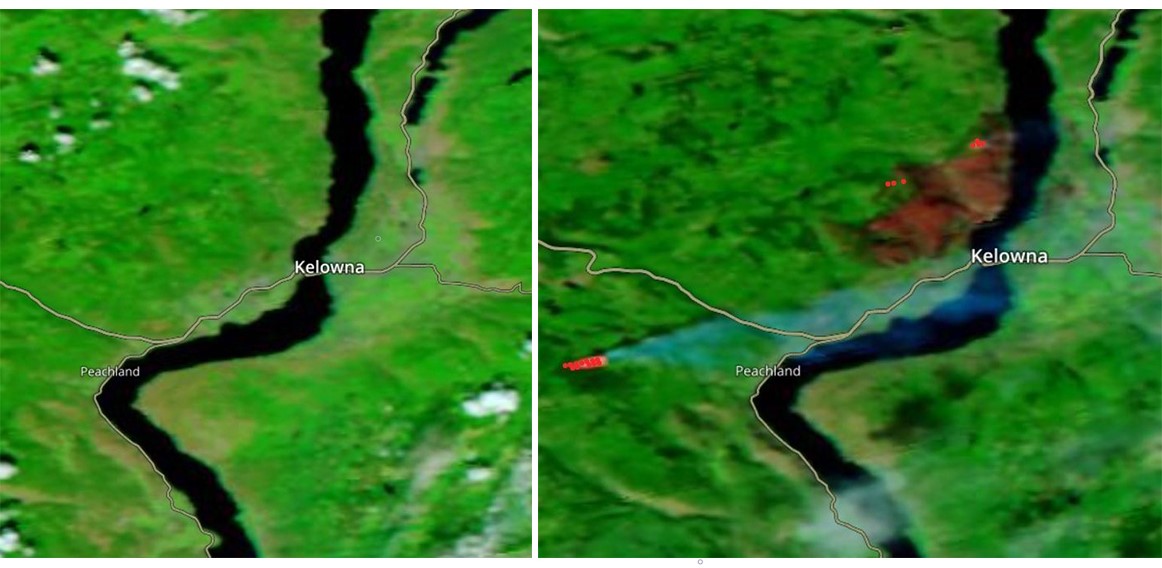Wildfires that raged across British Columbia this year have left lasting marks on the environment.

A satellite called Copernicus took images of the fire-scarred land — red-brown areas marking where wildfires destroyed significant landmarks and vegetation.
Provincial and federal wildfire agencies used a mix of European and NASA satellite instruments to help monitor and predict fire behaviours during this record-breaking fire season.

Additionally, images on NASA’s Worldview website show before and after images of the Kelowna area before the McDougall Creek wildfire. One image was taken in July, with another six weeks after the blaze ignited on Aug. 15.
According to the B.C. Wildfire Service, 2,221 wildfires have consumed 2.84 million hectares of land as of Oct. 3.
By 2029, Canada will have its own wildfire-specific satellite – WildFireSat.

Get daily National news
According to the federal government, the satellite will “monitor all active wildfires in Canada from space on a daily basis.”
“Every year, Canada sees about 7,500 wildfires burn over 2.5 million hectares of forest, a territory about half the size of Nova Scotia,” it added. “The amount of forest burned by wildfire is projected to double by 2050 due to our changing climate, which is causing longer wildfire seasons, more extreme weather conditions and increased droughts.”

The government also said three per cent of wildfires are very large and uncontrolled.
“Ultimately, these three per cent of wildfires cause about 97 per cent of the burned area,” it said.
“By increasing our capabilities to better anticipate which wildfires have the potential to burn out of control, they can be prioritized for suppression, leading to a drastic reduction in the economic losses related to wildfire.”









Comments